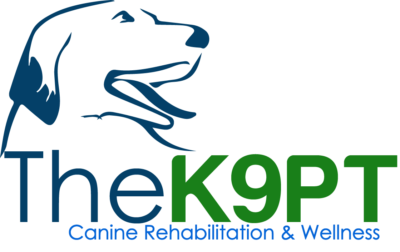Canine Rehabilitation: Putting the “Fun” in “Functional”
If you’ve spent any time around medical doctors, chances are you’re familiar with what a medical diagnosis is. Getting the right one is oftentimes the first step in establishing a treatment plan to recover from an injury or illness. But when it comes to canine rehabilitation, the medical diagnosis is only one ingredient that goes into determining the appropriate treatment. In the grand scheme of things, the functional limitations are what matter most to the pet and pet parent. No matter the medical diagnosis, you want your precious pooch to be able to engage in the physical activities they love to do. That’s where canine physical therapists step in with a “functional diagnosis”!
Physical therapists are experts at analyzing function and movement, identifying impairments such as weakness, range of motion deficits, and joint stiffness which may be contributing to the functional limitations at hand. Of course, the medical diagnosis is important to keep in mind as physical therapists may more easily and quickly identify “red flags” as they come up. This would indicate the need for a referral back to the veterinarian and possibly further testing to ensure the health of the dog is managed from a medical perspective.

As physical therapists, we make it a point to keep the focus on the patient right in front of us. Doing so allows us to provide individualized care, which is what each individual dog needs! We develop a “functional diagnosis” and design a tailored program instead of just following a cookie-cutter protocol that may not be most appropriate for each and every dog with that same medical diagnosis. Simply putting a dog in an underwater treadmill or doing laser therapy WITHOUT a specific plan of care is NOT canine rehabilitation and could possibly be doing more harm than good (especially if they are not even certified in canine rehabilitation).
Let’s say two dogs have the same medical diagnosis involving a knee injury but have strongly contrasting activity levels they need to get back to. The plan of care for each of them should reflect these differences. For instance, if the first dog mainly stays at home in a house with no stairs, while the second dog lives on a farm outdoors where days are spent roaming around grassy, hilly areas, the farm pooch is going to require a lot more training on inclines and uneven surfaces. The plan of care will include a set of measurable goals unique to each dog that takes into account the dog’s functional limitations. If we also say that one of the dogs has diabetes, which is a condition known to slow healing time, that would also factor into the selection of exercises and how fast they can be progressed.
Each and every canine is different. Yes, there are similarities among dogs of similar demographics, such as size and breed, but there are a number of factors that play a part in determining the course of the rehabilitation journey. By keeping the focus on the dog in front of us, we are able to design and develop a plan of care that addresses each dog’s specific needs. Because at the end of the day, it’s being able to do all the fun things you and your pup love to do together that matters most.
~TheK9PT
Dr. Francisco Maia, PT, DPT, CCRT
In collaboration with:
Dr. Aliya Bahjet, PT, DPT
Professional Writer and Physical Therapist
